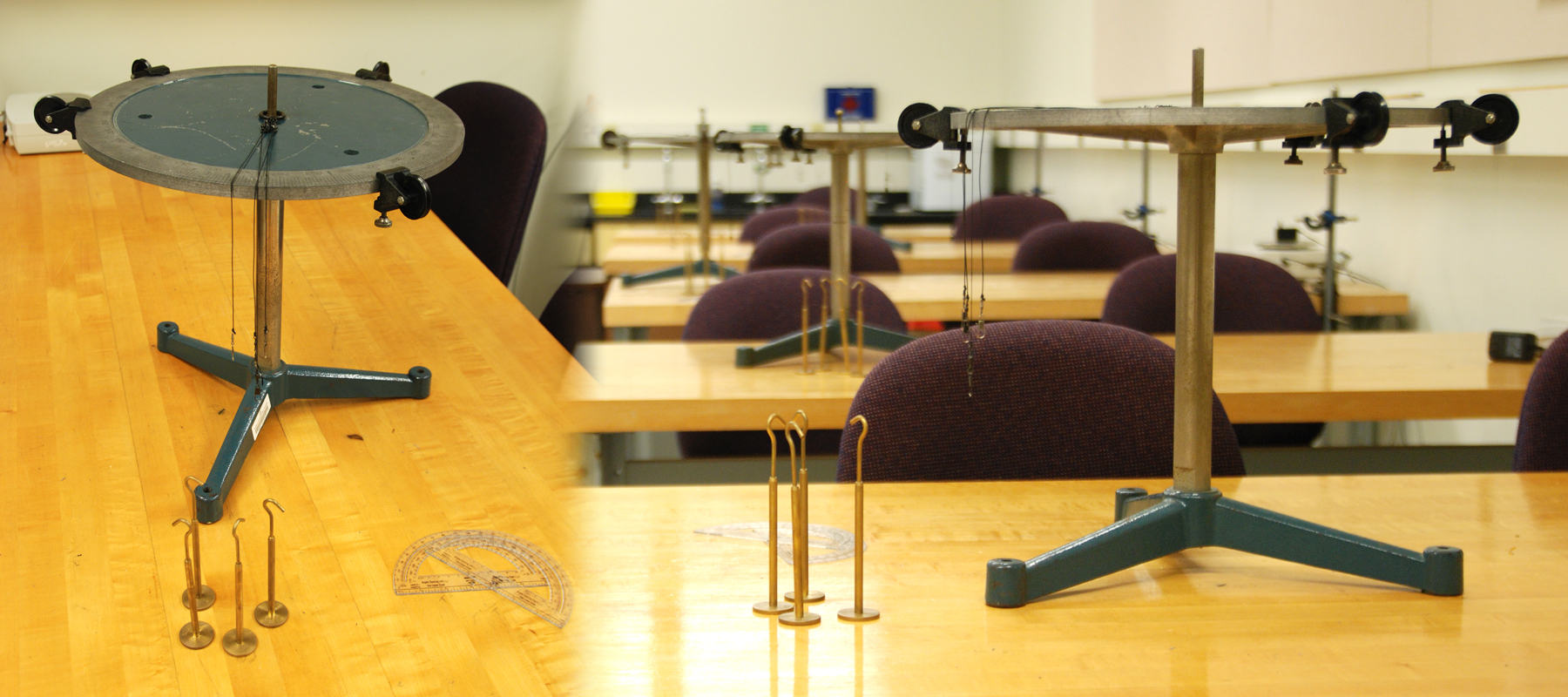
Force Table and Vector Addition
PHY 200 & 230
Lab PDFStudents use the force table to experimentally determine the net magnitude and direction of multiple forces applied to an object. The experimental resultant is then tested against theoretical solutions from both graphical and trigonometric techniques for addition of vectors.

Equipment
| Name | Location | Quantity |
| Force Tables | JE-105A-S12,18,24,30,36,42 | 1 per table |
| Weight Hangers, 50g | JE-105A-D44 | 4 per table |
| Protractor | JE-105A-D90 | 2 per table |
| Ruler, Transparent, Flexible | JE-105A-D90 | 2 per table |
Notes
Test the pulley wheels to ensure all spin freely. For the Loyd procedure, there should be four pulleys, strings and hangers on each force table. Use of the force table in 100-level physics courses or 210 may require only three, so check with supervisor or the instructor if uncertain. In all cases, the apparatus should be fully assembled, including hangers on strings laid over pulleys. Distribute a uniform set of large protractors with clearly marked vertex. See supervisor if uncertain. Make sure table top is screwed securely onto the force table stand. Be sure to add an additional Safe-T ruler to the set up, so that there is a total of 2 per table.
Slotted masses should be available in the back of the room. Place 4 100g masses and 8 50g masses at each table. If there are not enough masses of one kind, at least make 800g total from other masses at each table. Make sure that the room has plenty of paper (4 per table at least). Put out ream of ledger-sized paper if available.
Make sure there are four strings for four masses one each force table when you put them back.
« Back to Experiment List
Item modified on 2025-01-24 16:11:19 by andersone1.
